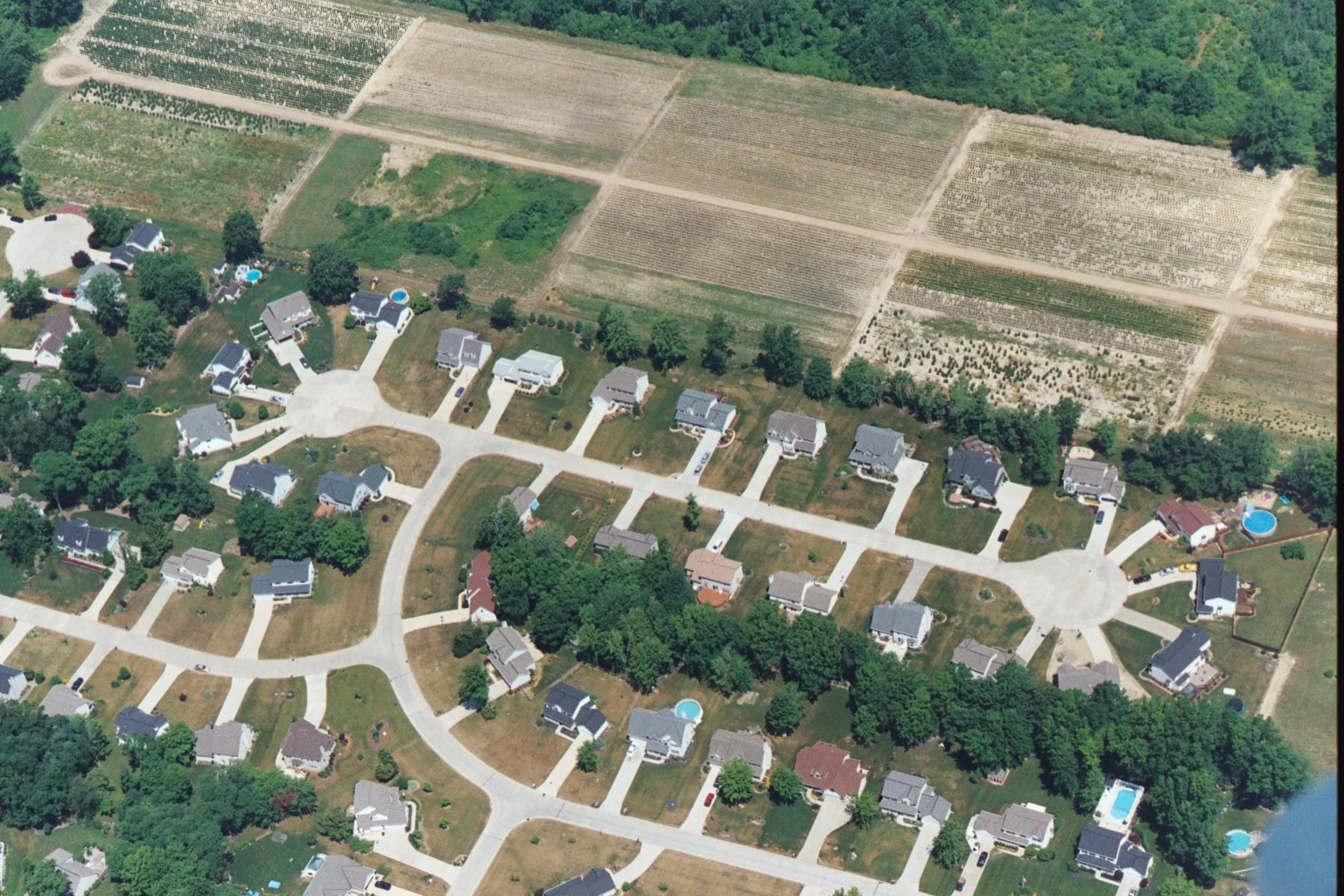Greater Ohio Policy Center (GOPC) organized a statewide affordable housing learning exchange at the Columbus Metropolitan Housing Authority (CMHA) offices. The learning exchange brought together practitioners from Columbus, Cincinnati, Cleveland, and Toledo to discuss the current housing affordability challenges in their regions and share policies and practices that seek to address the problem.
Emerging Land Use Trends Revealed in New ULI Report
Panelists at Eviction CMC Discuss GOPC Co-Researched Report Findings on Housing Affordability Challenge in Central Ohio
By GOPC Project Associate Alex Highley Recently, Greater Ohio Policy Center (GOPC) staff attended the Columbus Metropolitan Club’s (CMC) session Highest Eviction Rate in Ohio, Consequences? During the luncheon panelists explored the topics of affordable housing and the high rate of eviction in central Ohio, often referring to research in “The Columbus and Franklin County Affordable Housing Challenge: Needs, Resources, and Funding Models”, a report GOPC recently completed in collaboration with the Affordable Housing Alliance of Central Ohio (AHACO). Panelists for the session comprised of moderator Dan Sharpe of the Columbus Foundation, Brad DeHays of Connect Realty Mid-Ohio Contracting Services, Elfi Di Bella of the YWCA Columbus, and Stephanie Hightower of the Columbus Urban League.
The luncheon began with Sharpe explaining that Franklin County is the state leader in evictions while discussing some of the community development efforts to support families who are at risk of being evicted. To provide context to the housing situation, Sharpe noted that according to the AHACO report informed by GOPC’s research, a household needs to earn $15.98 an hour or $33,238 annually, at a full-time, year-round job in order to afford a two-bedroom apartment at Fair Market Rent. With the rate of poverty population growth three times faster than the rate of overall population growth in Franklin County between 2009 and 2014, residents are finding housing costs increasingly burdensome.
According to the AHACO report, there is a glaring shortage of 54,000 affordable housing units in the region, which, as DeHays explains, is a direct contributor to the high rate of evictions in Franklin County. Often, the first step to an eviction is an unfortunate event such as illness or a flat tire, and then suddenly problems spiral out of control when bills rack up and families cannot pay their monthly rent. While Hightower was keen to stress that there are often a wide variety of reasons people are evicted, the root of the problem is that one in three families in Columbus live paycheck-to-paycheck, and therefore struggle to afford basic costs such as paying rent. 354 families are evicted in Central Ohio every week and to compound this problem, a portion of them may later end up homeless, often in part because of the stigma and barriers which a record of eviction brings to future housing opportunities.
In alignment with models analyzed by GOPC as part of the AHACO report, Hightower points to incentivizing developers to create units for low- to middle-income people as a potential tool for expanding affordable housing. Speakers at the session also suggested strengthening the Section 8 voucher program and simplifying the Low Income Housing Tax Credit (LIHTC) program, along with improving education for landlords and tenants. GOPC supports Hightower’s emphasis on the importance of building capacity of organizations currently working on affordable housing issues and minimizing duplication by coordinating efforts. With a large number of nonprofit, public, and private groups in Columbus working to expand affordable housing, it is important to maximize the work of leaders currently working in this policy arena and to ensure that future interventions are done collaboratively.
For more information, including GOPC’s exploration of affordable housing models from around the country, read the AHACO report: The Columbus and Franklin County Affordable Housing Challenge: Needs, Resources, and Funding Models
GOPC Assesses Suitability of Replicating Peers’ Funding Tools to Support Affordable Housing in Central Ohio
By Alex Highley, GOPC Project Associate The Affordable Housing Alliance of Central Ohio (AHACO) has released a new report, The Columbus and Franklin County Affordable Housing Challenge: Needs, Resources, and Funding Models, underscoring the difficulties many residents face in obtaining affordable housing in Columbus and the surrounding suburbs. Informed by Greater Ohio Policy Center (GOPC) research, the report then investigates ways that the public sector can aid in increasing the affordable housing supply. GOPC’s systematic study of tools and programs that have been successfully used in cities outside Ohio highlights opportunities for expanding affordable housing in and around Columbus.
With Central Ohio’s population growing at a substantial rate and wages not keeping up with increasing rent prices, affordable housing is harder to come by for renters in the region. Between 2009 and 2014, median rents went up by almost twice the rate of median household incomes. Given that Franklin County poverty rates are growing, including in most of the major suburbs, many new job openings do not pay a “housing wage,” and the stark spatial mismatch between where jobs are located and where people live, AHACO concluded there is a strong need for new affordable housing. AHACO sought GOPC’s expertise to deliver robust research of viable models that could support much of the good work already being done throughout communities in Columbus to improve affordable housing opportunities for residents.
Click Here to Access the Executive Summary and the full Report
Methodologically, GOPC conducted an extensive literature scan and internet search to assess the funding mechanisms that communities around the country employ in order to spur the creation of a rich and diverse set of housing choices. In total, GOPC studied 40 funding mechanisms in 25 communities in detail. GOPC judged the merits of possible replication in Central Ohio by comparing the respective cities’ demographic data, summarizing the cities’ relevant economic conditions that made implementation of the tools possible, and concluding with weighing the advantages and limitations of mirroring the tool in Central Ohio. Examples of successful tools and the cities they are used in are listed below.
- Seattle, WA - Dedicated Property Tax Revenue – $340 million generated over 20 years
- Austin, TX - General Obligation Bonds - $120 million generated over 7 years
- Portland, OR - Tax Increment Financing (TIF) – $107 million generated over 4 years
- Washington, DC - General Fund Appropriation – $48 million generated over 1 year
- San Francisco, CA - Linkage Fees & Impact Fees – $188 million generated over 9 years
- Denver, CO - Inclusionary Zoning: Developer Set Asides – $7.6 million generated over 13 years
- Denver, CO - Social Impact Bonds – $8.7 million generated over 1 year
Along with explaining the mechanism of each tool and highlighting the number of affordable housing units produced through the program, GOPC discussed the tools’ applicability to Columbus. In many cases, the tools already exist and are used to some extent, or current law precludes their usage towards affordable housing purposes. For instance, General Obligation bonds issued by a county, township, or municipality can be used for housing construction costs, but may not be used for a rental or operating subsidy in Ohio. The county sales tax offers another opportunity; the current temporary permissive Franklin county sales tax of .25% generates over $58 million per year. If this revenue were to be directed toward affordable housing purposes, then this would represent a sizable amount of revenue available for funding solutions should voters renew the tax in 2018.
To understand how many new units of affordable housing could be created using these tools, GOPC estimated the total costs of various housing projects. For instance, permanent supportive housing costs $165,000 per unit to build and $7,000 per person per year in operation costs. GOPC also reviewed the feasibility of particular tools from a legal standpoint. For example, Franklin County has the authority to devote general funds toward rent subsidies, similar to the Local Rent Subsidy Program used in Washington DC. To conclude the report, GOPC created a chart for the Appendix which organizes each funding source according to the political subdivision (states, cities, counties, etc.) that may implement a program to support affordable housing along with whether that program is currently being used for housing purposes in Franklin County.
Click Here to Access the Executive Summary and the full Report



